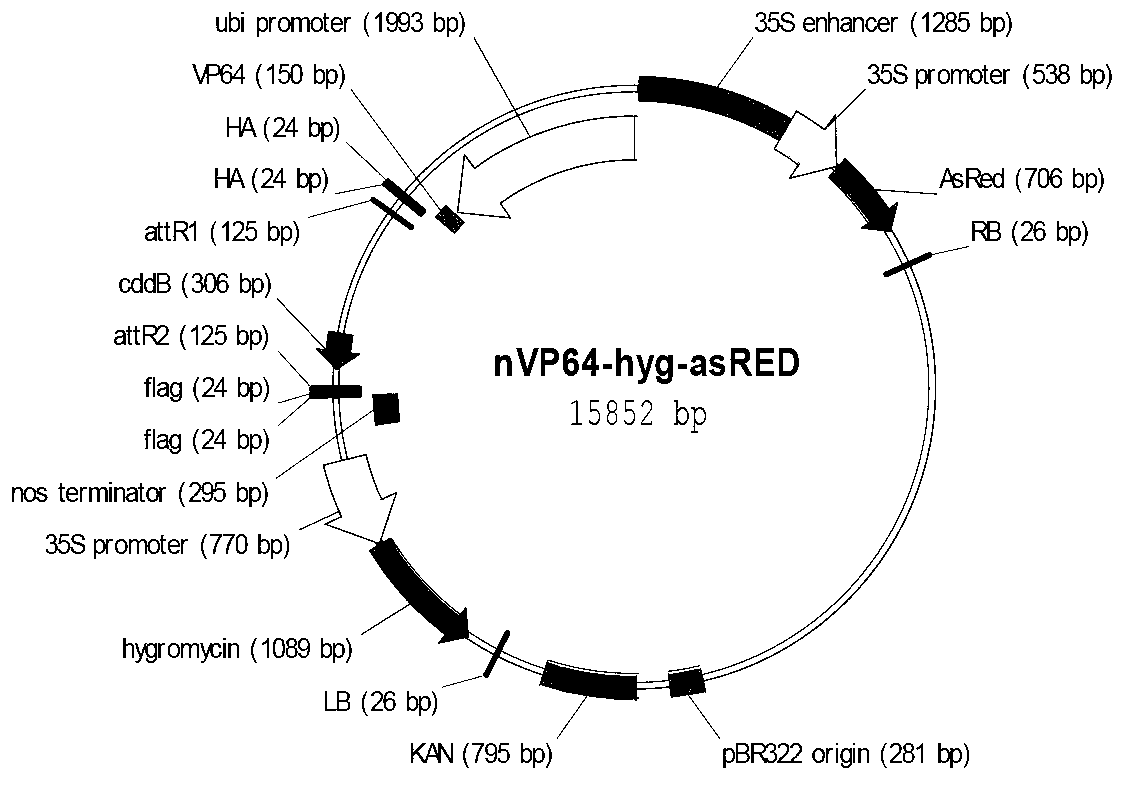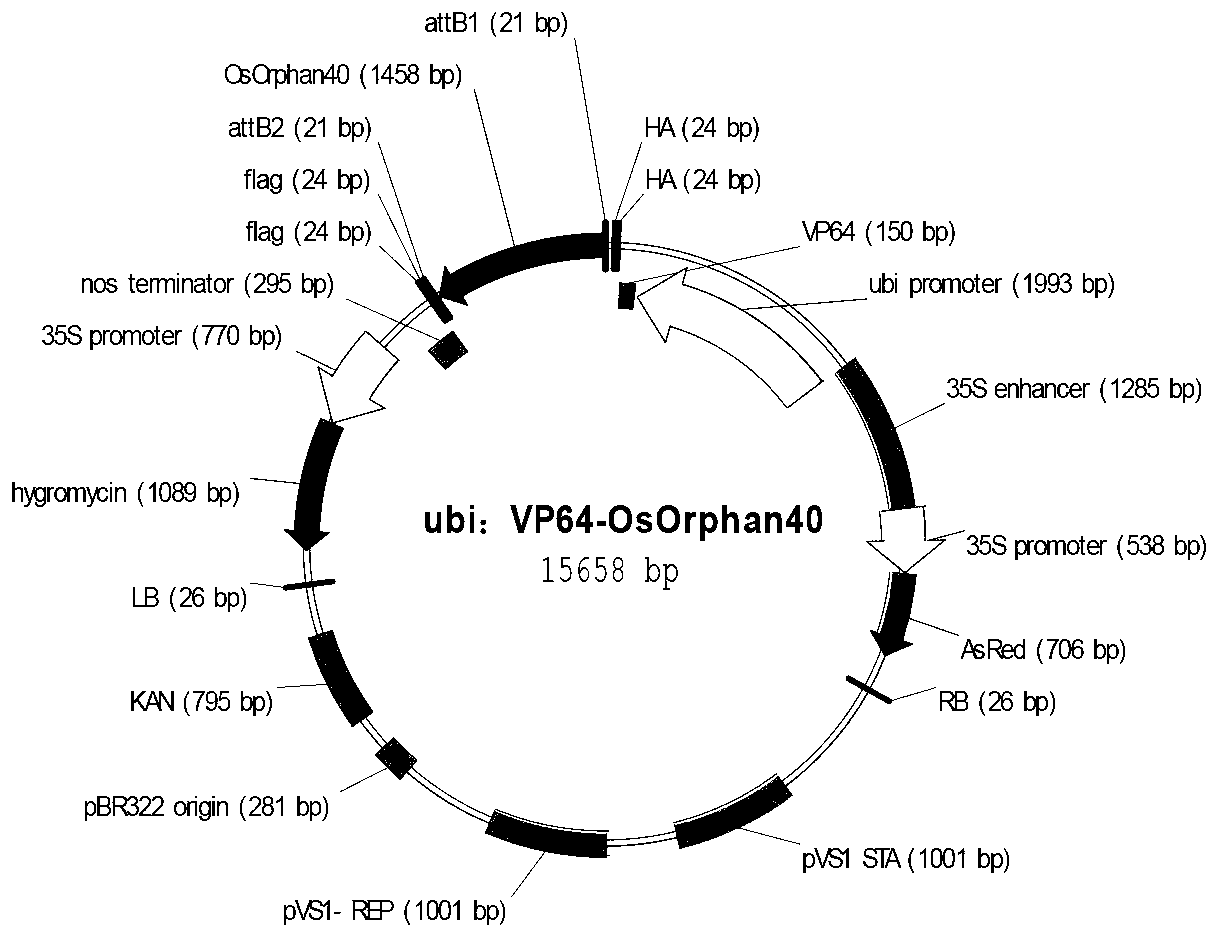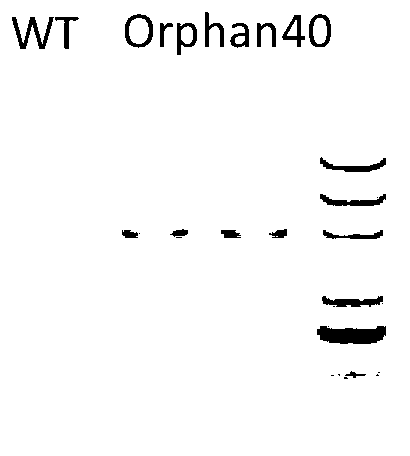Application of rice transcription factor Os06g08400 genes
A technology of rice transcription factor and gene, applied in the field of genetic engineering
- Summary
- Abstract
- Description
- Claims
- Application Information
AI Technical Summary
Problems solved by technology
Method used
Image
Examples
Embodiment 1
[0025] Example 1 Acquisition of rice transcription factor Os06g08400 gene and construction of plant expression vector
[0026]Find the rice transcription factor OsOrphan40 gene in the Plant Transcription Factor Database (http: / / plntfdb.bio.uni-potsdam.de / v3.0 / fam_mem.php?family_id=Orphans&sp_id=OSAJ), or in the MSU Rice Genome Annotation Project Database Search for the number Os06g08400, and design PCR amplification primers according to its CDS sequence: forward primer F1: 5′-CAAAAAAGCAGGCTTCATGGGTTGGTTGACCAAATTTTTTAGA-3′ and reverse primer R1: 5′-CAAGAAAGCTGGGTCAAATGGGAAAGTCCCTGTTAACCG-3′.
[0027] Using rice 'Nipponbare' (Oryza sativa subsp. japonica) leaves as materials, total RNA was extracted by TRIzol method, and cDNA was obtained by reverse transcription. The reaction steps were as follows: (1) On ice, add The following materials: total RNA 6 μl (0.1ng-5 μg), Oligo(dT)18 primer 1 μl, nuclease-free ddH 2 O5 μl, placed in a PCR instrument at 65°C for 5 minutes; (2) Then ...
Embodiment 2
[0032] Embodiment 2 Obtaining of transgenic rice plants
[0033] Take the mature seeds of rice 'kitaake', shell them manually or mechanically, select the plump, smooth and spot-free seeds and inoculate them on the induction medium for induction culture after being sterilized. Select the rice callus with good appearance and good growth as the recipient material, and use the Agrobacterium-mediated method to transfer the vector ubi:VP64-OsOrphan40 into the rice callus, and use acetosyringone containing 100μM and an O.D. value of 0.7 The AAM transformation solution of Agrobacterium was transformed, and the callus soaked in the transformation solution was placed on the co-culture medium for co-cultivation, cultured in the dark at 25°C for 3 days, then placed on the screening medium for about 30 days, and subcultured once every 10 days . Then, the screened out resistant calli were transferred to the differentiation medium for differentiation for about 20 days, and subcultured every...
Embodiment 3
[0038] Example 3 Identification of Os06g08400-VP64 transgenic rice
[0039] In order to detect whether the CDS sequence of the Os06g08400 gene is integrated into the rice genomic DNA, the total DNA of wild-type and transgenic rice leaves were extracted by CTAB method, and the detection primer sequences were designed. The upstream primer: 5′-ATTTTTTTAGCCCTGCCTTCATACG-3′, the downstream primer: 5′ '-CCAAATGTTTGAACGATCGATCCA-3', for PCR, the amplification system is: reaction buffer 5μl, dNTP 1μl, ddH 2 O 2.2 μl, Taq DNA polymerase 0.2 μl, upstream and downstream primers 0.3 μl each, DNA template 1 μl, the reaction conditions were hot start at 96°C for 5 minutes; 95°C for 30s, 55°C for 30s, 72°C for 2min, a total of 32 cycles; 72°C Extend for 10 minutes, and finally finish the reaction at 25°C. The transgenic plants were identified, and the amplified products were subjected to agarose gel electrophoresis. The electrophoresis results showed that the target bands were amplified in ...
PUM
 Login to View More
Login to View More Abstract
Description
Claims
Application Information
 Login to View More
Login to View More - R&D
- Intellectual Property
- Life Sciences
- Materials
- Tech Scout
- Unparalleled Data Quality
- Higher Quality Content
- 60% Fewer Hallucinations
Browse by: Latest US Patents, China's latest patents, Technical Efficacy Thesaurus, Application Domain, Technology Topic, Popular Technical Reports.
© 2025 PatSnap. All rights reserved.Legal|Privacy policy|Modern Slavery Act Transparency Statement|Sitemap|About US| Contact US: help@patsnap.com



